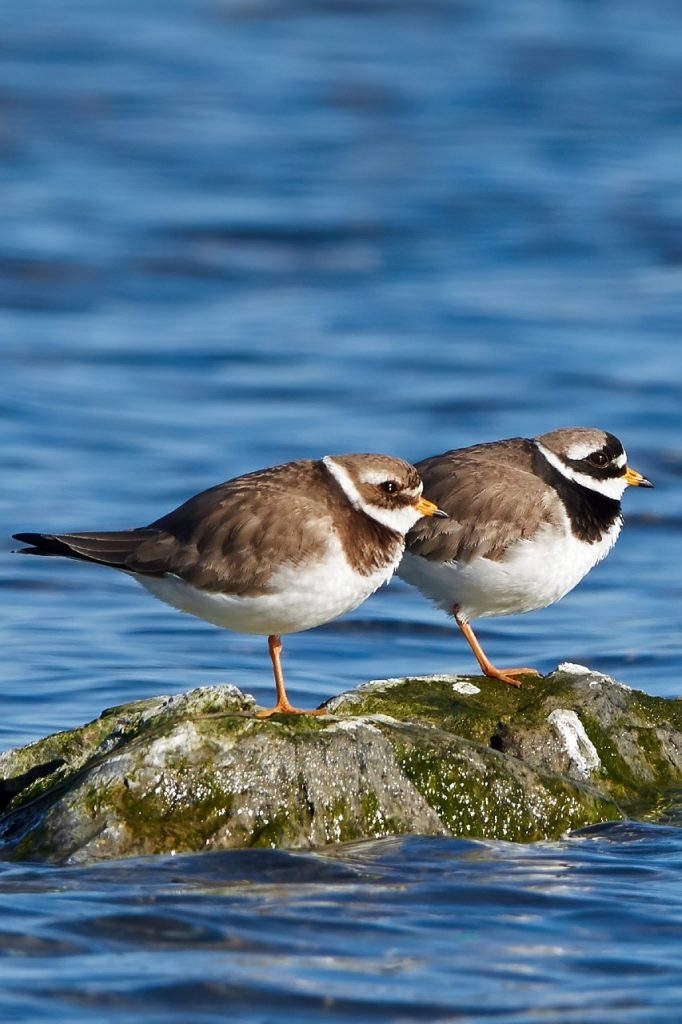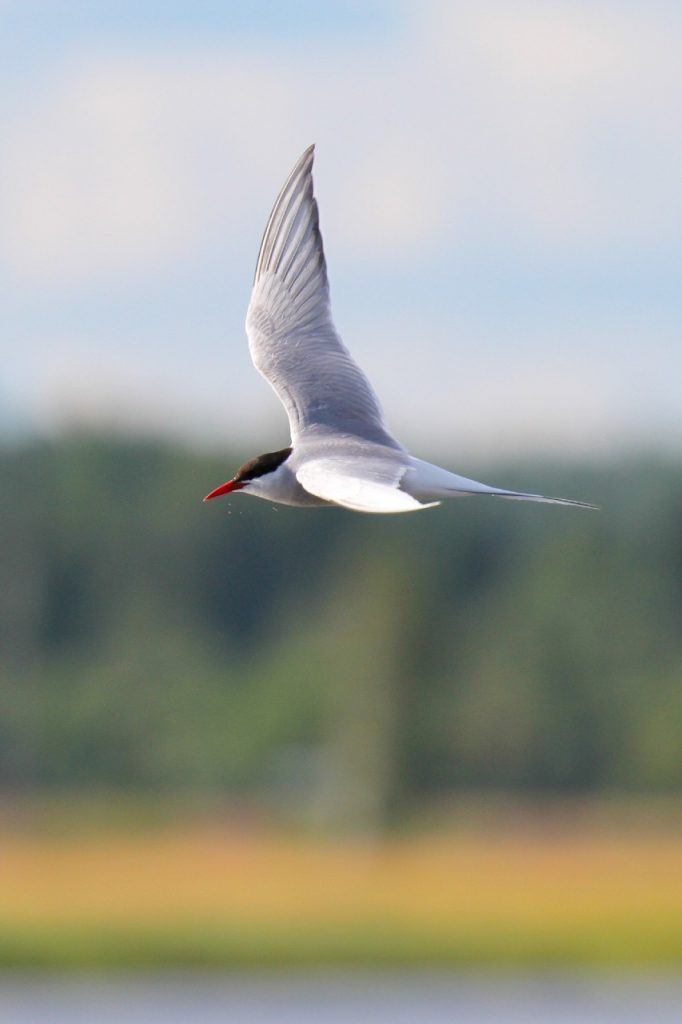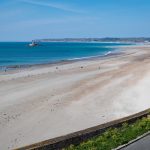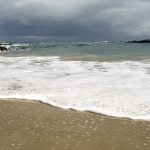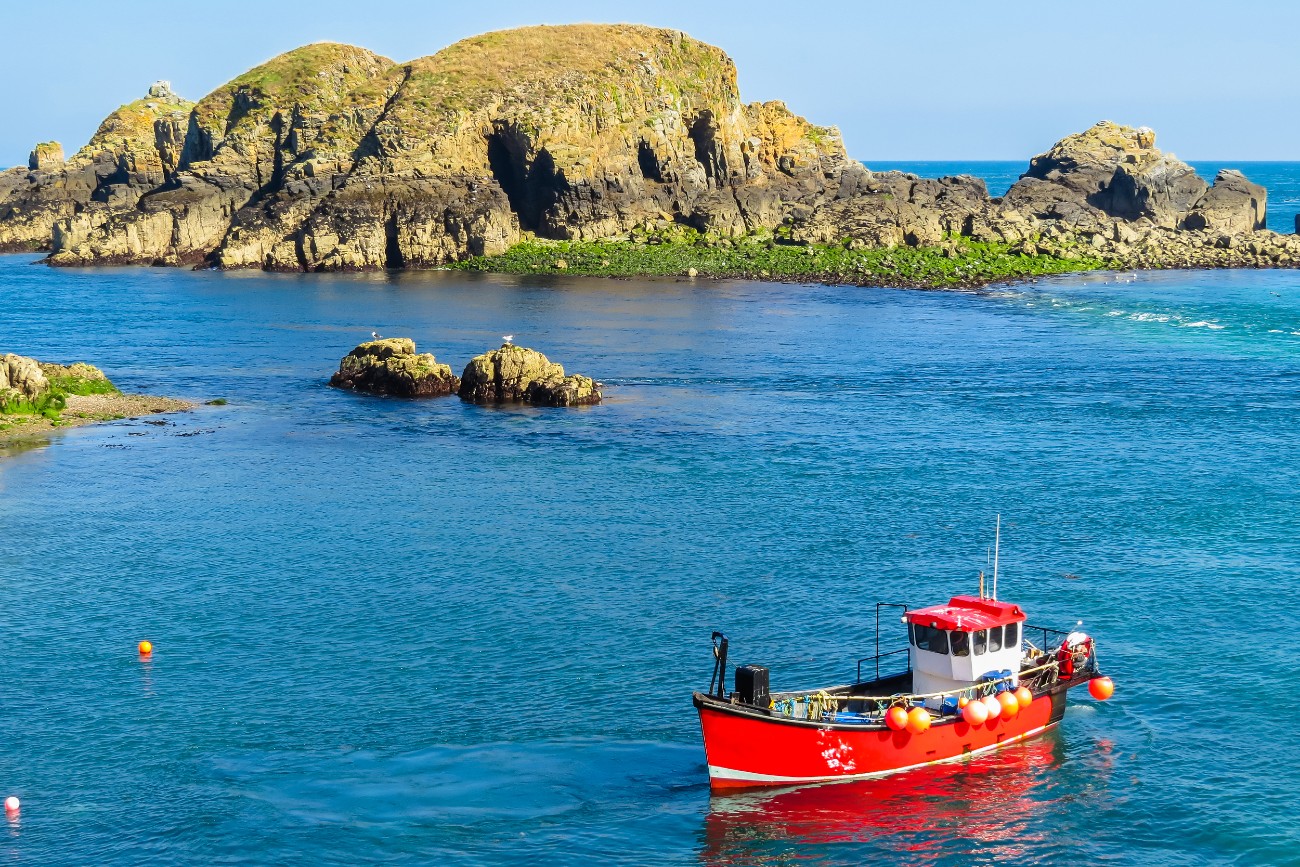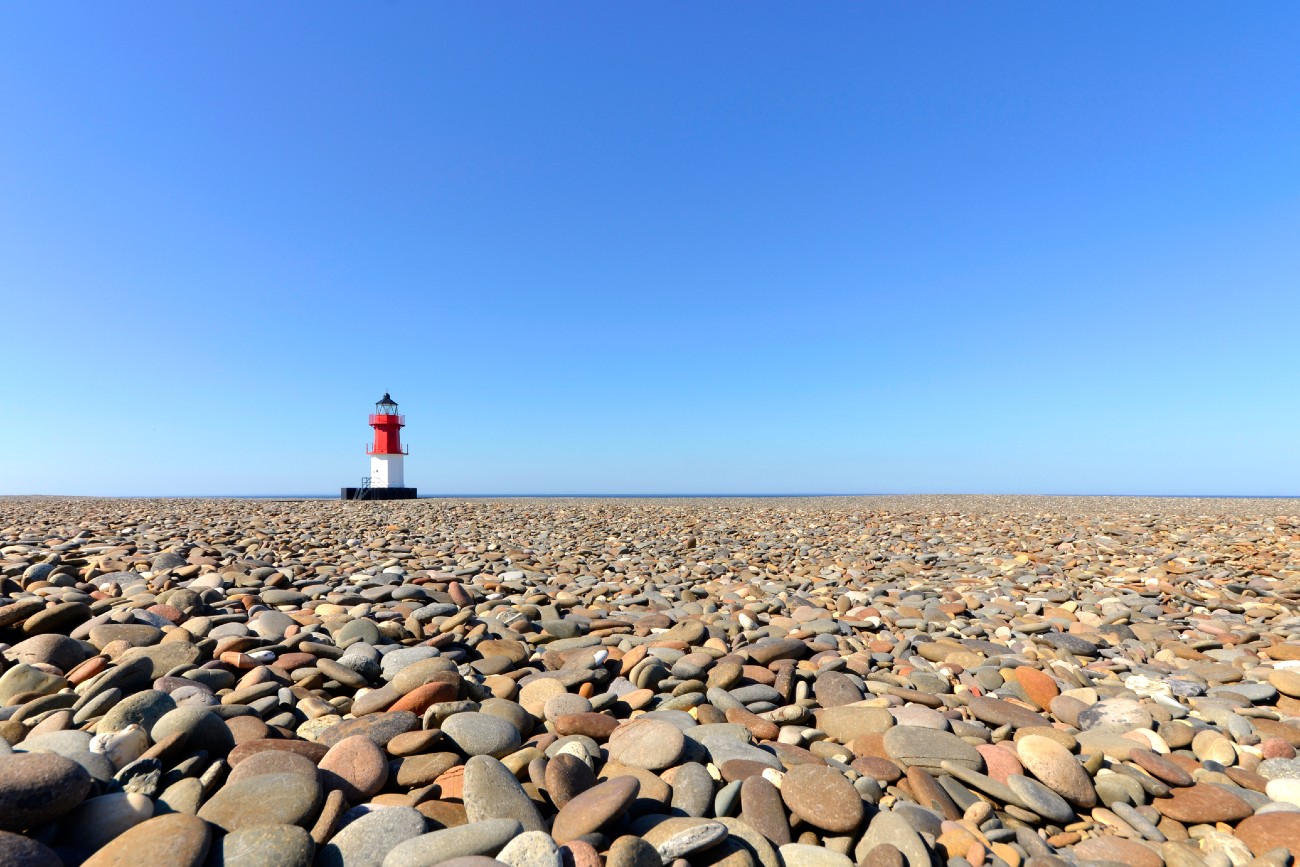
If you travel as far north on the Isle of Man as you can go, you will eventually find yourself amongst the windswept landscapes of the Point of Ayre. This is the most northerly point on the island, lying at the tip of Ramsey Bay. It’s also the closest point on the Isle of Man to the British mainland, situated just 16 miles south of Burrow Head in Scotland. When the weather is good, the Scottish coastline is easily visible from the Point of Ayre and this can make for some spectacular views.
As the area is considered to be a dark sky zone, it’s also an ideal place for stargazing, with the lack of light pollution meaning the night sky can be viewed in great detail. It’s also possible to see the Northern Lights from the point, but you’ll need to visit on a winter night and hope for good weather and a bit of luck.
One of the most obvious features on the landscape is the 19th century lighthouse that rises up from the short grassland at the end of the point. Dating from 1818, this is the oldest lighthouse on the Isle of Man and was build by the famed engineer, Robert Stevenson.
It remains operational to this today, however the shifting sands mean the lighthouse now sits much further back from the ocean than it did when it was first built. For this reason, a smaller lighthouse known as The Winkie was later constructed 250 yards closer to the sea, standing on a large gravel bank.
Shingle Beaches
With the Point of Ayre jutting out into the sea, it’s at the mercy of the ocean’s powerful influence. The result is a tidal region with strong ocean currents, which push and pull interminably on the shingle beaches around the point. This causes an ever-changing build-up of shingle, so that the beaches appear differently after each new tide.
This turmoil in the landscape only adds to the drama of the area and many visitors come to experience this wilder side of the Isle of Man. A short distance inland, the shingle gives way to low-lying sand dunes that lead south-west. Providing protection from the ocean, these coastal habitats are a place for colourful windflowers and gorse bushes to thrive.
The 8-mile stretch of sand dunes from the Point of Ayre to Cronk-y-Bing is a site of major ecological significance, with some regions making up a National Nature Reserve and a Site of Special Scientific Interest. The marram dunes and heathland provide habitats for a wide range of birdlife, from Ringed Plovers to Curlews.
There are also several freshwater pools hidden behind the dunes and these can be great places to spot amphibians such as frogs.
For even more chances to see wildlife, keep an eye out for Grey Seals fishing just offshore or venturing onto the beach to rest.
There are some excellent walking opportunities around the Point of Ayre, with the salty sea air and open landscapes making it a perfect spot to relax and be at one with nature. I highly recommend walking the nature trail through the heathland and shingle beaches towards the Ayres Visitor Centre, situated south-west of the point. The Visitor Centre provides detailed information about the region’s wildlife and ecology and is a prime destination if you want to learn more about the area.
- Ringed Plovers
- Arctic Tern
The Sea Swallow
The Point of Ayre is visited by thousands of seabirds throughout the year, some as summer migrants and others as year-round residents. Representing one of the former, a species you might want to look out for is the Arctic Tern. Sometimes known as ‘Sea Swallows’ for their slender bodies and pointed wing-tips, these birds are famous for their mammoth migrations. They spend the winter in the icy wilds of Antarctica, before migrating to the British Isles and the Arctic in the summer to breed.
In total, this can result in a journey of up to 59,000 miles – an incredible feat for a creature that only measures about 35 cm in length. This means Arctic Terns have the longest migration routes of any animal and can travel the same distance in their lifetimes as taking three trips to the Moon.
The Point of Ayre is almost the only place on the Isle of Man to see Arctic Terns, with 56 occupied nesting sites being identified in 2017. The Terns choose to breed in the dunes behind the beach, and it’s very important not to disturb them during this time, as it can lead to them abandoning their eggs. Key nesting sites are usually fenced off for this reason, but it’s easy to view the birds as they fish out over the ocean.
There is much to discover at the Point of Ayre, with the fluctuating coastal landscapes setting the stage for wildlife to thrive. This draws many hundreds of visitors each year, and the wonderful sea views make the area a favourite spot for many who make the trip.
There is much more to see in the Isle Of Man. Explore another unique spot in this article: A Landscape Fit For A Saint – Peel Hill


